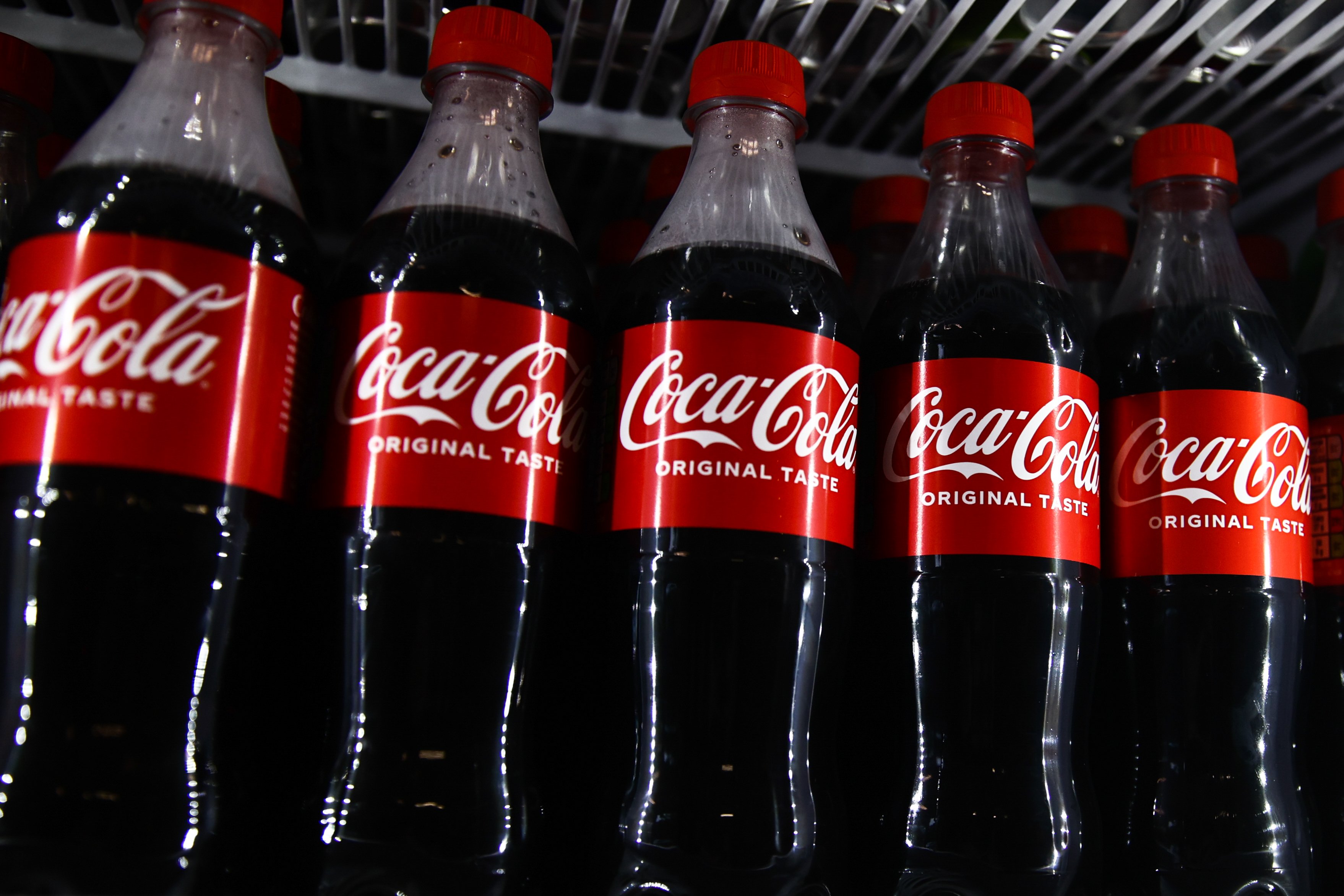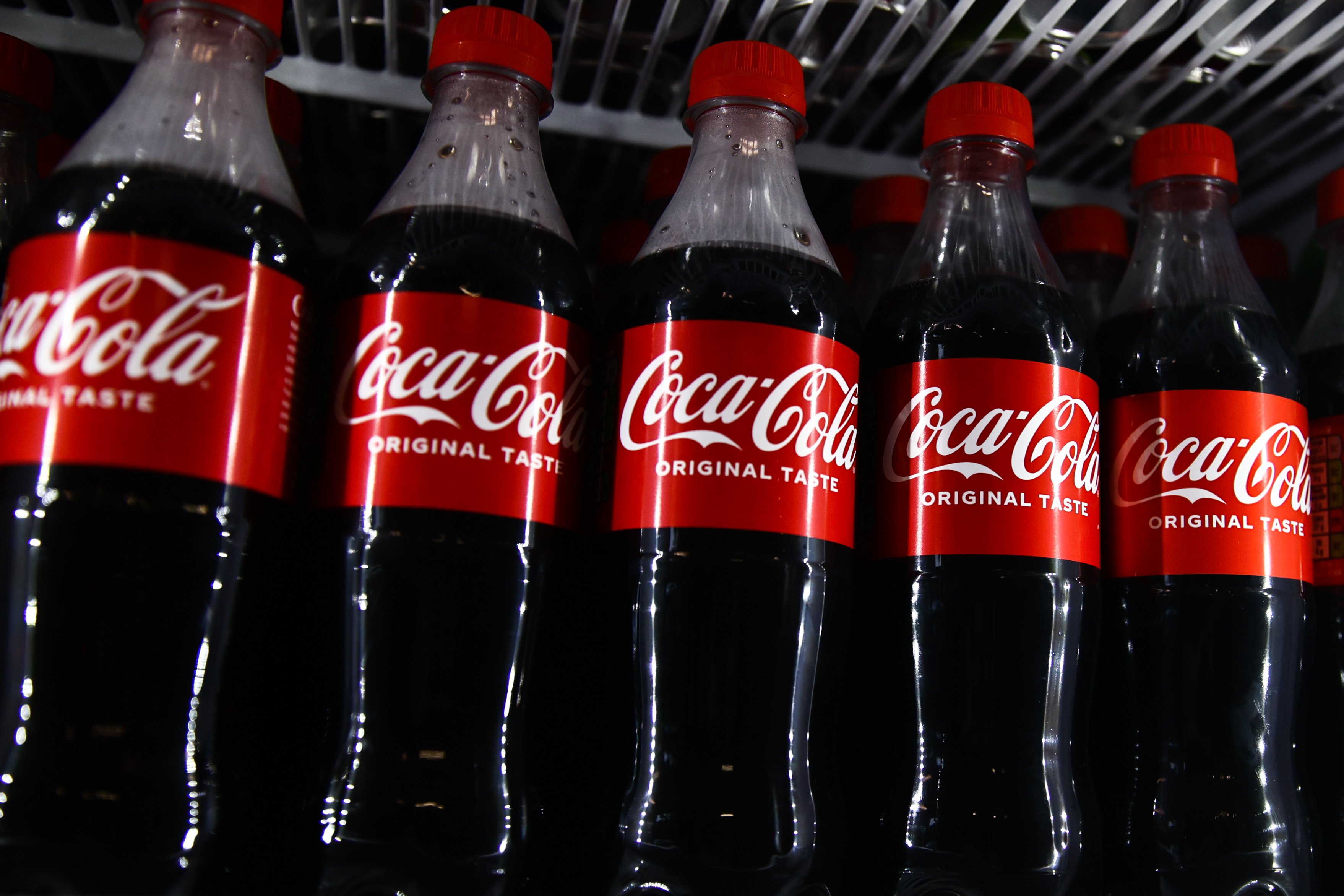Coca-Cola's (KO +1.86%) iconic red cans, filled with sweet sugar water, are known the world over. The company also produces Sprite, Fanta, Minute Maid, Powerade, and Dasani, but Coke remains its most popular product.
There are two main ways consumers can buy a Coke: They can pick up a can from the supermarket or a vending machine, or they can fill up a cup at a quick-serve restaurant or gas station. Coca-Cola generates significantly more revenue from bottles and cans it calls "finished products," which it distributes primarily through its Bottling Investments Group -- company-operated bottlers.
Finished products accounted for 60% of Coca-Cola's revenue last year while concentrates -- like the syrup it sells to soda-fountain operators and its bottling partners -- generated 40%. The biggest portion of Coca-Cola's finished-products revenue stems from its Bottling Investments Group, which generated 47% of total revenue last year.

Image source: Coca-Cola.
A shrinking company
At first glance, investors can see Bottling Investments revenue is declining. Net operating revenue for the segment declined 2% in 2015 and 14% in 2016. As a result, Coca-Cola's overall revenue has been in decline, and it expects the trend to continue. What exactly is going on?
The Bottling Investments Group, or BIG, is divesting a lot of its bottling plants and refranchising its North American bottlers. BIG was never intended to be a growing part of Coca-Cola's business. Instead, it was created to make Coca-Cola's bottling partners more effective. The company would take over its bottlers, install new best practices, and when everything was running perfectly, release them back into the wild.
After establishing BIG in 2006, Coca-Cola is now divesting and refranchising more bottlers than it's acquiring. By the end of 2017, it will have refranchised all of its North American bottlers.
To be clear, that's a good thing. It should make the company less capital intensive, improving its return on invested capital and freeing up more cash to return to shareholders through dividends and share repurchases. It also means more of the company's bottlers are operating more efficiently, reducing its costs and ensuring their goals are better aligned with the mother ship.
Lots of revenue, but where are the profits?
There's another reason divesting and refranchising its bottlers is good for Coca-Cola. While BIG generates a lot of revenue for Coca-Cola, it has extremely low profit margins. Selling off its bottling assets will allow the company to "concentrate" on its concentrate business.
As sales of its concentrate generate a higher portion of revenue, Coca-Cola should see increases in its gross profit and operating margins. Additionally, most of its bottling partners deal exclusively with Coca-Cola, giving it significant pricing power in its concentrate business. That will allow it to keep increasing the segment's revenue modestly, even as the demand for sugary carbonated beverages declines.
While the divestment of Coke's bottling operations is causing some short-term earnings declines, analysts expect the company to grow earnings overall in the long run. Wall Street analysts' consensus is for about 5% earnings-per-share growth over the next five years, partially assisted by its ongoing share-repurchase program.
The Bottling Investment Group might bring in the big bucks, but it's very capital-intensive and requires a lot of overhead, with lower gross margins than the concentrate business. As management decreases its exposure to finished products, investors should see a smaller, more-efficient company that continues to produce modest growth and excellent free cash flow.






